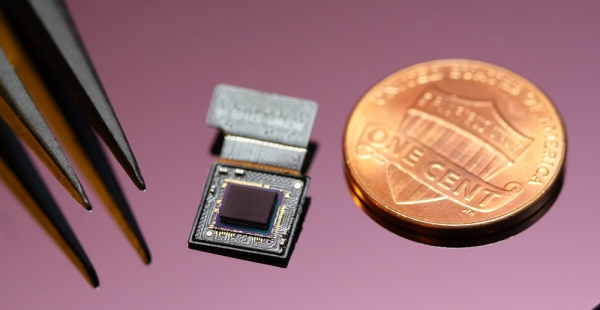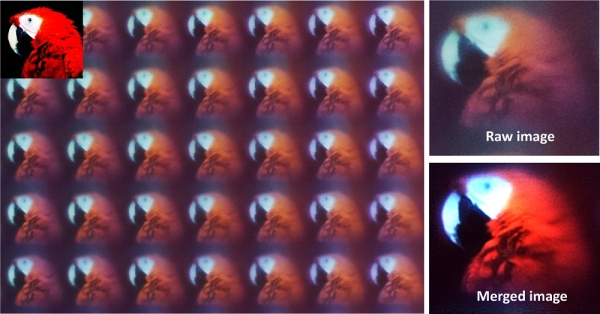
A research team led by Chung Ki-hoon, a professor of bio and brain engineering at KAIST, announced that it has developed an ultrathin arrayed camera with an insect-eye structure for high-resolution imaging.
The camera imitates the eyes of an insect named Xenos peckii, which has a unique visual structure, and has a thinner lens thickness (0.74mm) and a wider optical night angle than a commercial camera.
Unlike conventional insect eye imitation cameras, it has solved interferences between lenses by imitating characteristics of Xenos peckii's eye structure and has increased possibility of commercialization by producing them through MEMS (Microelectromechanical system) process that can be mass-produced.
The structure of insects' overlapping eyes has special visual characteristics such as wide viewing angle, fast motion sensitivity, and infinite focus, so ultra-small camera research simulating insect eyes is actively underway.
The research team copied this and produced a structure that can block light interference between each lens in a photolithography process and combined it with an image sensor to create a super-thin arrayed camera.

The final image is made by synthesizing images acquired through the same viewing angle on each lens. The research team found that although the resolution of the images was less than that of commercial cameras, it improved over single-channel images, and gave meaning to the fact that they made great strides in thickness, viewing angle and commercialization.
"We have developed a method to produce ultra-thin cameras that can be commercialized in real life," the research team said. "We will contribute to miniaturization by applying various small cameras such as mobile devices, surveillance and reconnaissance equipment, and medical imaging devices to areas that need to be."
The findings, led by Dr. Kim Ki-soo, were published online on February 27 in the international journal “Light: Science & Applications.”


